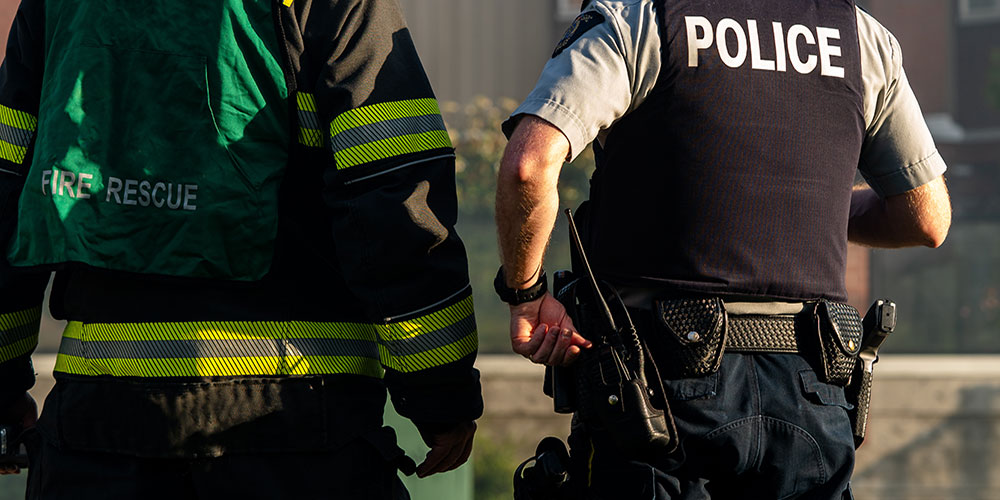Note: The views expressed by guest bloggers and contributors are those of the authors and do not necessarily represent the views of, and should not be attributed to, Campus Safety.
Feeling confident in the safety of a student at the school they attend is extremely important. Safety and security are used interchangeably in many cases. Therefore, the tenets of safety (measures taken to protect people from accidents, injuries, and exposure to hazardous conditions), as well as security (measures taken to protect people from violence, theft, vandalism, bullying, and other threats), should be prioritized on our campuses.
All schools should have an organized, systematic emergency operations plan (EOP) in place to reduce safety and security risks while providing access to competent law enforcement and fire department personnel in decision–making positions to prevent, prepare for and respond to a crisis. This may range from an accident affecting a member of the school community to a natural disaster or any emergency that may impact individuals in the school.
Many school districts have a safety/security director, safety/security coordinator, or they have assigned this role to one of the district administrators. Whichever method is available does not matter as much as having the access to the level of knowledge necessary to mitigate all emergencies.
The Kern High School District (KHSD), located in the County of Kern (Bakersfield, Calif.), happens to employ a system that provides a district-operated Peace Officer Standards and Training (POST) certified police department and an Emergency Preparedness and Safety Division which is led by a former Deputy Fire Chief/Fire Marshal. Additionally, onsite Campus Security personnel that are under the supervision of the Student Behavior and Support division are available. The district is the largest, high school-only district in the state of California, where faculty and staff are trained to assess the seriousness of incidents and respond according to the EOP’s established procedures and guidelines.
Creating a culture of safety requires that when preparing for an emergency, we are not to assume anything and that we observe all areas of precaution. Not only are we susceptible to active assailants but we also have many other emergencies that require the expertise of fire personnel, Emergency Medical Services (EMS), maintenance and operations workers, utility companies, and other first responders — along with our police — as resources. While school administrators provide a great deal of valuable information about the school and its students, it makes sense to incorporate the wide range of tactical/situational awareness, incident command system (ICS) principles, and fire/life safety concerns involving those staff members who possess real-time experience, when possible.
The district has taken the lead in providing the direction necessary to enact the required emergency operations, fire/life safety compliance, emergency drills, and evacuation procedures within our district with guidance from our Emergency Preparedness and Safety division, while the Police Department is active daily throughout the district in maintaining security at all campus sites. Our officers are POST-certified peace officers as defined in California Penal Code 830.32, all of whom have several years of experience working at either a county Sheriff’s Department or municipal police department prior to their employment.
In the division of Emergency Preparedness and Safety, the leadership has many years of fire-related operational experience, including functioning as an incident commander on large-scale emergencies such as hazardous materials response, commercial structure fires, technical rescues, mass-casualty incidents, and large-scale evacuations, while also serving as the chief fire code official/fire marshal for a large, all-risk fire department.
Additionally, the oversight of the Emergency Operations Plan (EOP)/Comprehensive School Safety Plan (CSSP) is managed within the Emergency Preparedness division and revised annually as per the California Department of Education Code, while the emergency operations procedures, Incident Command System (ICS), and active drills are vetted and practiced regularly.
School districts cannot maintain safe campuses without the investment of parents, family, and their communities. The problems that our schools face are a direct reflection of the society that we live in. We are all responsible for being part of the solution to keep our youth on the right track. We want students, teachers, and staff members at the KHSD to feel safe on our campuses. Keeping the areas in and around our campuses secure is accomplished by combining the efforts of the Police Department, the Emergency Preparedness and Safety Division, Campus Security personnel, and staff members. This operational plan, or some hybrid form/combination of it, should be the preferred method for school districts going forward.
Benny F. Wofford is Kern High School District’s Manager, Emergency Preparedness and Safety. He has an M.S. in Occupational Safety and Health and a B.S. in Fire Science Administration. Benny is a Registered Fire Instructor, California State Fire Marshal (CSFM), and State Certified Fire Inspector I & II.













